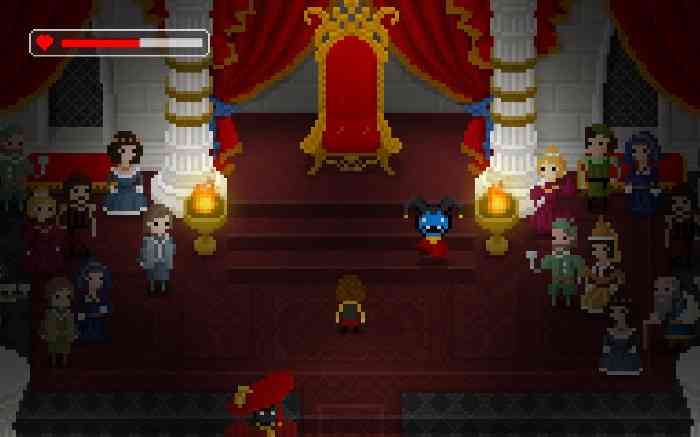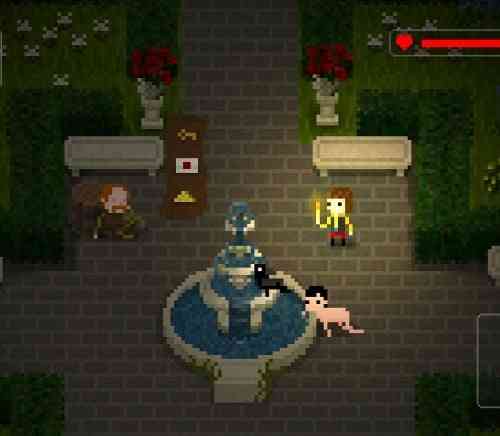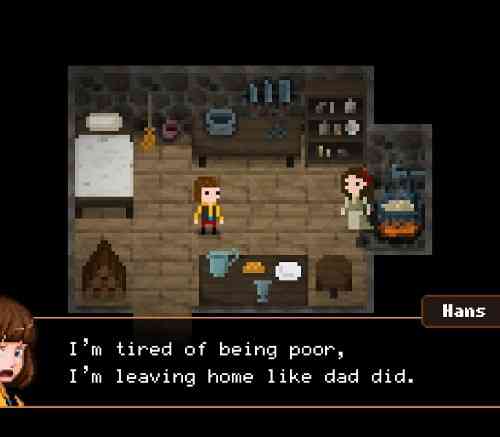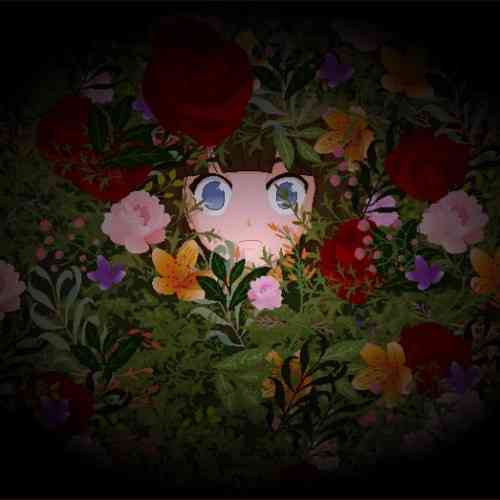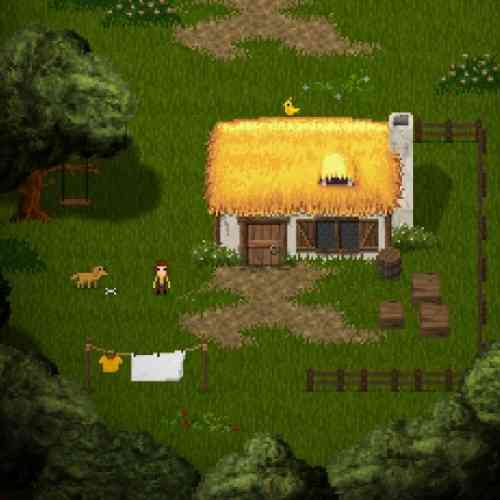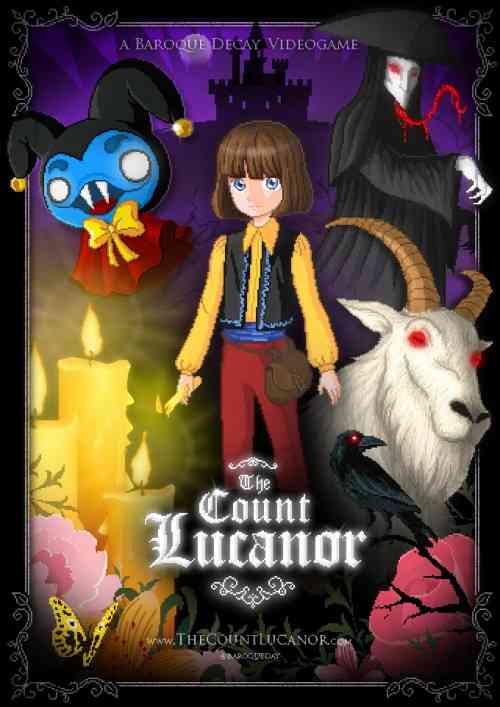Being a fan of 8 and 16 bit horror games (Lone Survivor, Imscared… I’m lookin’ at you!) I was really excited to check out Baroque Decay’s latest title, The Count Lucanor. Boasting clear inspiration from great titles such as The Legend of Zelda and Silent Hill, it’s all packed into a terrifying RPG puzzle game. Its true charm lies within its pixelated graphics along with a solid chiptune soundtrack.
The game centers around a young poor boy named Hans, who after not receiving anything for his 10th birthday, hastily decides to leave his home to become an adventurer in search of his own fortune. However, suddenly waking up in the dark, he finds that everything he thought he’d known has changed. Trying to find his way back home, he spots a Kobold and blindly follows him to the eerie castle Tenebre where he tells you to simply guess his name and you will attain mass fortune. Hans being the naive child he is, agrees to the terms and begins his adventure trapped in an ominous castle hiding from the creatures that wish to be rid of him.
______________________________
“Boasting clear inspiration from great titles such as The Legend of Zelda and Silent Hill, it’s all packed into a terrifying RPG puzzle game.”
As the game went on, it made me really want to keep playing. The game mechanics are very reminiscent of many classic RPGS like the aforementioned The Legend of Zelda and even more recently, Undertale. Throughout the game, you are faced with puzzles that need to be solved that will in the end, reward you with letters which will help you guess the mysterious Kobold’s name. The puzzles are relatively easy, but give you an oddly satisfying feeling once completed.
Like the Resident Evil typewriter saves, the save feature in The Count Lucanor is very unforgiving where you have to give a gold coin to a raven (where it is far too easy to spend too many coins accidentally). And when you are unlucky enough to have been caught by the ghastly creatures of the game, you get a very familiar (and infuriating) “YOU DIED” message that pops onto the screen.
To add suspense to the game, they’ve made lighting a core part of how you see the world around you. Leave candles along the way to make sure the next time you come back, a creature isn’t waiting in the dark to get you. Playing as Hans, you can’t use combat to defend yourself from enemies. One of the things you’ll notice right away, is just how slow he walks, which adds quite a bit of tension when you’re trying to hide from an enemy. Thank goodness for tables and curtains! By climbing under or behind one of these items, you can hope to make it through this crazy night yet, and maybe, just maybe you can become the next Count Lucanor!
The controls are very easy to master, making getting around, interacting with characters and items and completing tasks very easy. Much like the graphics, this game has stripped back the controls to a minimum and it works very well in the bringing that nostalgic experience to life.
In terms of graphics, The Count Lucanor is very pleasing in it’s three main areas; the characters, the level design and the cutscenes. Though the characters are very simple in design, there’s still a very certain charm and uniqueness that each characters has. The level design is similar to Zelda games, in the sense that there are large open spaces of greenery and a great big castle to be explored. While nowhere near as expansive as it’s predecessors, the rooms of Castle Tenebre are still interesting enough to have a good look around and take in some of the minor art flourishes dotted here and there. The only downside are the cutscenes in the game, they are so wonderfully done and stunning which gave me vibes of the classic Studio Ghibli films, and I wish there were more of them throughout the game.
The Count Lucanor brings to us the best of two amazing genres that many of us love, with a great twist. The game has memorable and unique characters, a very well done level design and an amazing soundtrack. The survival horror elements are very well done even if the game itself is a bit simplistic. The game is very well thought out and has very good pacing, however that doesn’t stop me from wishing the game were longer!
*** PC code provided by the publisher ***
The Good
- Great sound design
- Cool retro inspired graphics
- Interesting story with likeable and unique characters
The Bad
- Feels a little too short
- Having to back track is annoying
- Unforgiving save system
